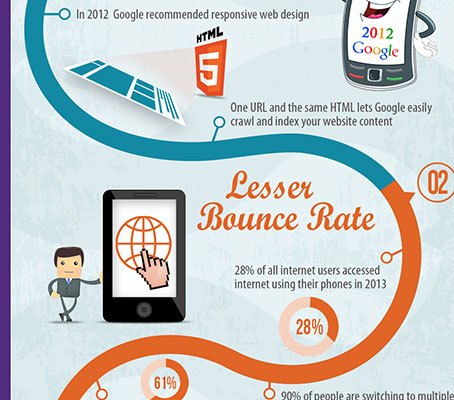The Growth Of Website Design: From Earlier Times To Now
The Growth Of Website Design: From Earlier Times To Now
Blog Article
Post Author-Booker Clarke
In the past, web sites were easy and concentrated on details. Read the Full Posting was direct, and design was for desktop computers. Currently, customer experience is vital. Information overviews layouts for very easy navigating. Responsive layouts suit various devices. Today, dark mode lowers stress, and minimal food selections improve navigating. Interactive attributes involve customers, and strong visuals stand apart. AI assimilation enhances engagement. See exactly how design has advanced to enhance your online journey.
Very Early Days of Website Design
In the very early days of website design, simpleness preponderated. Internet sites were basic, with limited colors, typefaces, and designs. https://www.forbes.com/sites/forbescommunicationscouncil/2022/03/18/sound-marketing-strategies-for-generation-z/ got on supplying details as opposed to showy visuals. Users accessed the web with slow-moving dial-up links, so rate and functionality were vital.
Navigation menus were straightforward, normally located on top or side of the page. Sites were designed for computer, as mobile surfing had not been yet prevalent. Web content was king, and developers prioritized simple readability over complicated layout components.
HTML was the primary coding language used, and developers had to work within its restraints. Animations and interactive functions were minimal contrasted to today's criteria. Internet sites were fixed, with little vibrant web content or individualized customer experiences.
Surge of User-Focused Layout
With the evolution of site style, a shift in the direction of user-focused layout concepts has actually become progressively noticeable. Today, developing web sites that prioritize user experience is crucial for engaging visitors and attaining business goals. User-focused style involves recognizing the demands, choices, and behaviors of your target market to tailor the internet site's layout, material, and includes as necessary.
Designers now perform detailed study, such as customer studies and functionality testing, to collect insights and feedback directly from users. This data-driven technique helps in producing user-friendly navigating, clear calls-to-action, and aesthetically enticing user interfaces that reverberate with site visitors. By putting the customer at the center of the design process, websites can supply a much more customized and delightful experience.
Receptive layout has actually additionally emerged as a crucial element of user-focused style, guaranteeing that internet sites are enhanced for different gadgets and screen sizes. This flexibility enhances accessibility and usability, accommodating the diverse ways customers engage with web sites today. Fundamentally, the surge of user-focused style indicates a shift in the direction of developing digital experiences that focus on the requirements and expectations of the end customer.
Modern Trends in Website Design
Check out the current patterns shaping website design today. One noticeable fad is dark mode style, using a sleek and contemporary appearance while lowering eye pressure in low-light settings. An additional essential trend is minimalist navigation, simplifying menus and enhancing individual experience by concentrating on essential elements. Integrating micro-interactions, such as animated buttons or scrolling impacts, can create an extra appealing and interactive site. Responsive design stays critical, ensuring seamless customer experiences throughout different tools. Additionally, utilizing vibrant typography and asymmetrical designs can include visual rate of interest and accentuate specific material.
Integrating AI technology, like chatbots for consumer support or customized recommendations, enhances customer interaction and streamlines procedures. Availability has additionally end up being a substantial trend, with developers focusing on inclusive design practices to deal with varied individual needs. Embracing sustainability by maximizing site performance for rate and efficiency is one more emerging fad in website design. Working together with customer comments and information analytics to iterate and enhance design continuously is crucial for staying appropriate in the ever-evolving digital landscape. By welcoming these modern trends, you can produce an aesthetically attractive, easy to use site that resonates with your audience.
Conclusion
As you review the evolution of website style from the very early days to currently, you can see how user-focused design has become the driving force behind contemporary fads.
Embrace the trip of adjustment and adjustment in website design, constantly keeping the user experience at the center.
Remain present with the latest fads and modern technologies, and never ever stop advancing your approach to produce aesthetically sensational and easy to use internet sites.
Develop, adapt, and produce - the future of web design is in your hands.
